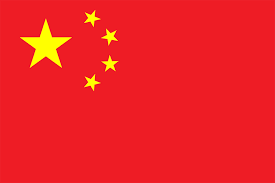- cross-posted to:
- china@lemmygrad.ml
- cross-posted to:
- china@lemmygrad.ml
For context, that’s almost 200mil more then the population of the United States.
Sheesh I read it was 39 million or so in 2000

The subheader reminds me that China is making the awful decision of financializing their economy with consumer debt, which is basically a neoliberal practice.
The difference in China is that banks are largely state owned and consumer debt can be easily forgiven.
And are the banks operating on a basis of systematic debt forgiveness?
The purpose of state owned banks is to keep the economy functioning well, so if debt became an issue then yeah there would be systemic debt forgiveness. It’s also worth noting that household savings in China have hit a record high, so doesn’t look like there is a problem with personal debt to begin with at the moment https://www.wsj.com/livecoverage/stock-market-today-dow-jones-bank-earnings-01-12-2024/card/chinese-household-savings-hit-another-record-high-xqyky00IsIe357rtJb4j
Paywalled article. Anyway, my issue isn’t that I imagine that China will have too many people with near-zero savings and substantial debt – I can’t really speculate on that – my problem is that this financialization of the economy is moving away from socializing the economy on any sort of rational basis. Even within the assumptions of a market economy, it doesn’t seem to me like it’s actually good for development by pumping consumption numbers for their own sake, that’s literally just capitalist expansion getting out of hand when having relatively low consumption (on a voluntary basis) is, in a sane world, a good thing. People talk a big game about the birdcage economy, but it doesn’t seem like a tempering of the capitalist anarchy in production at all to be so deliberately wasteful.
That’s absolutely not happening though. In fact, China’s private sector has been in a structural decline since 2021 directly as a result of policy. https://www.piie.com/research/piie-charts/2024/chinas-private-sector-has-lost-ground-state-sector-has-gained-share-among
I think what you’re forgetting here is that China is still a developing country, where there are hundreds of millions of people who still live in fairly impoverished conditions. Raising their standard of living necessarily involves raising consumption, because their current consumption levels are incredibly low.
I’m not really an Economics Guy, but I’ve seen a few versions of that “piie chart” at least (what an awful pun when it’s not even a pie chart). It’s kind of ironic that I’m arguing that they are becoming finance ghouls and you counter with an article showing the increased market capitalization (i.e. stock value) of SOEs. Anyway, imagining that it was something more convenient to your point, like market share (since market share has probably followed a similar pattern), I still wouldn’t find it compelling because my view is that China is not a dictatorship of the bourgeoisie, but a dictatorship of state capitalist bureaucrats. That is to say, SOEs that are guided by profit are still subject to capitalist anarchy in production, and we can see from things like the rising stock value of these companies that they are guided by profit, with the unprofitable sectors (like the public transit we both admire) merely being investments, vehicles, for the profitability of the other companies.
I think what you’re forgetting here is that China is still a developing country, where there are hundreds of millions of people who still live in fairly impoverished conditions. Raising their standard of living necessarily involves raising consumption, because their current consumption levels are incredibly low.
This seems like backwards thinking to me. Aside from the fact that China has been pretty open about wanting to use debt for consumption for Growth tm, not for raising anyone’s standard of living, putting people in debt just isn’t a great way of combating poverty, as China itself has demonstrated by combating poverty through changing the real material conditions of the poor through housing, transit infrastructure, and so on. It wouldn’t be a good thing either way, but I’m pretty sure their debt schemes are meant for middle income households.
You appear to be focusing on the wrong thing here. What that chart shows is that SOEs constitute an increasingly growing portion of the economy right now.
Meanwhile, you can call Chinese model state capitalist, but it’s worth taking a second to actually think through what that means in practical terms. The primary goal of a privately owned capitalist enterprise is to produce profit for the owners, with any social value being strictly incidental. It’s a vehicle of wealth accumulation. On the other hand, the primary purpose of state owned enterprise is to provide social value, such as building infrastructure, providing social services, producing energy, and so on. Therefore, SOEs are fundamentally different from actual capitalism.
That is to say, SOEs that are guided by profit are still subject to capitalist anarchy in production, and we can see from things like the rising stock value of these companies that they are guided by profit, with the unprofitable sectors (like the public transit we both admire) merely being investments, vehicles, for the profitability of the other companies.
That’s demonstrably false. If that was the case then China wouldn’t be able to do large scale infrastructure projects such as cross-country high speed rail. In fact, these projects are often decried by western economists as being inefficient and unprofitable precisely because their goal is to produce long term social value as opposed to being profit driven.
Not only that, but the role of the markets in China is far more limited than it is in western liberal economies. Chinese model follows idea of a birdcage economy introduced by Chen Yun. It states that the market acts as a bird, free to fly within the confines of a cage representing the overall economic plan. Meanwhile, the state acts as the planner, setting the overall goals and priorities, etc while the market acts as the allocator, determining the most efficient way to achieve those goals. This model helps ensure that the primary function of the market is as a tool for economic development rather than a platform for wealth accumulation.
This seems like backwards thinking to me
If improving the standard of living for the population seems backwards to you, then I really don’t know what else to say here.
Aside from the fact that China has been pretty open about wanting to use debt for consumption for Growth tm, not for raising anyone’s standard of living, putting people in debt just isn’t a great way of combating poverty, as China itself has demonstrated by combating poverty through changing the real material conditions of the poor through housing, transit infrastructure, and so on.
We’ve already established that people aren’t being put to debt, and in fact Chinese personal savings are growing. I don’t understand why you’re back to using this talking point that’s clearly false. Raising living conditions through providing housing, infrastructure, and so on, is precisely what continues to happen in China. However, as people’s conditions improve they also tend to consume more. These things aren’t at odds with each other.
It wouldn’t be a good thing either way, but I’m pretty sure their debt schemes are meant for middle income households.
Zero actual evidence for this statement.



